 | E-mail to Birds Korea |
 | KWBS |
in the Region
 | The Oriental Bird Club |
 | BirdLife International (Asia) |
March
March often contains a mixture of dry, cold days (with night temperatures down to 3-4°C, and highs between 10 and 15°C) and occasional milder showery, windy weather.
Most wintering species are still present, but in progressively reduced numbers. Falcated Duck regularly display on reservoirs and ponds, while small numbers of Baikal Teal remain at key sites. Migrant cranes peak in the northwest, as can the Ancient Murrelet migration along the east coast. Small numbers of shorebirds, including early Little Ringed Plover and flocks of Far Eastern Curlew arrive, plus Siberian Buff-bellied Pipits and the first leucopsis White Wagtails. Hundreds of Rustic Buntings, Dusky and Naumann’s Thrushes move north-east out of China and Japan, along with smaller numbers of raptors and occasional influxes of Japanese Waxwing. Bramblings and Siskins often form large flocks at key migration points. Sunny days tempt Rustic, Meadow, and Yellow-throated Buntings into song, and numbers of Oriental Stork, while still very small, peak at Seosan.
Rare finds in March in recent years have included Red-crested Pochard, Yellow-bellied Tit, and Red-throated Thrush. Careful searching through gull flocks may reveal taxa like Pallas’s Gull, barabensis, cachinanns, or smithsonianus. National firsts in March include Bar-headed Goose in 2003, European Robin on Hong Island in 2006, and Bonelli’s Eagle on Ui Island in 2007.
(The following records are a compilation of our own sightings and records sent in by other observers. As well as being posted on the Birds Korea website(s), selected records are also forwarded to other Korean-language birding websites; records of threatened species are arranged and forwarded to Birdlife International and national authorities when appropriate; flag images and records are passed to bodies responsible for their coordination throughout the flyway; and all records sent to us are used to compile annual reports and to support the evolving understanding of the status of many of Korea’s birds.)
Socheong Island, March 31
39 species logged, with highlights Chinese Blackbird (1) and Red-billed Starling (2). Otherwise, low numbers of typical early spring migrants, including White’s Thrush (3), Naumann’s Thrush (17), Red-flanked Bluetail (17), Daurian Redstart (19) and a single Barn Swallow.
Incheon Ferry -Socheong Island, March 30
In good conditions a fairly unremarkable ferry journey out to Socheong, with few birds beyond Black-tailed Gulls close to the mainland. Species of most note included single Grey Heron and Brambling over the sea moving east, 52 Streaked Shearwater, and 3 Ancient Murrelet. On Socheong, twenty-four species logged in only an hour of light, including 3 Siberian Stonechat, and single Black-faced Bunting, White’s Thrush and Hoopoe – all typical migrants at month’s end. Best for the day were two Greater Scaup – apparently the first record on the island, bringing the total to approximately 355 species since records began here in 2002.
Namhansan, March 30
Spring sounds resounded across the mountain today with drumming woodpeckers, singing songbirds and numerous Eurasian Nuthatches zipping in and out of nest-holes. Grey Wagtails are also in territory on the stream. Restless flocks of Brambling and Rustic Bunting already in full breeding colours moved through the woods. Varied, Marsh and Long-tailed Tits appeared unusually bold and busy about their activities.
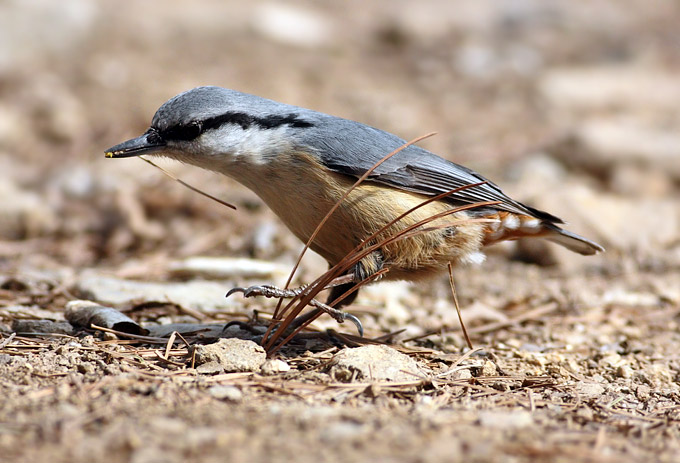


Daejon and Hwaseong, March 28
First a drive down to Daejon to pay respects to the two Plumbeous Water Redstarts – unfortunately, both males – that have set up residence there. Then up the coast to Hwaseong, where a reasonably close high tide revealed very good numbers of early shorebird migrants: a conservative 2000 Great Knots, at least as many Dunlin, close to a thousand Grey Plovers, several hundred Bar-tailed Godwits, slightly smaller numbers of Black-tailed Godwits, and smaller counts of Far Eastern and Eurasian Curlews and Kentish Plovers. Several Saunder’s Gulls were scattered in among the shorebirds.Also in the area: a female Hen Harrier and two Mandarin Ducks.
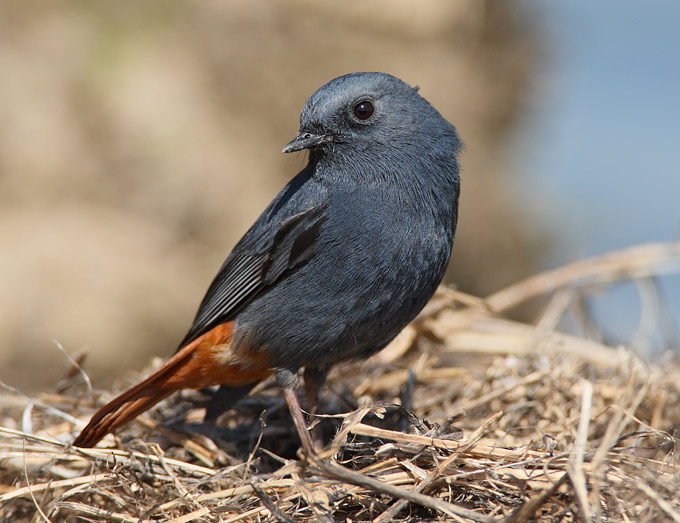

Junam Reservoir, March 28
A warm, sunny, springlike day with a moderate breeze. The many birdless hours I have spent at Junam during March were finally rewarded in spectacular fashion by a flock of c.35 Japanese Waxwings. Although most of the flock were seen only in flight overhead, around 12 of the birds settled in the row of trees along the southern edge of the reservoir, where they hawked for insects and generally showed very well through the telescope. I attempted some photos using my point and shoot camera through the scope with predictably poor results, although one or two acceptable record shots were obtained. Meanwhile, an Arctic Loon at the northern end of the reservoir was a first for me at Junam, while an adult Black-tailed Gull, also at the northern end of the reservoir, was a similarly unexpected inland find. Three showy Little Buntings were near the Junam 3rd Pumping Station, in the same area where I flushed two Japanese Quail on Friday. The merest remnants of Junam's wintering birds remain, with only 40 White-fronted Geese and 9 Taiga Bean Geese in the area, and virtually no interesting wildfowl apart from the ubiquitous Shoveler, Mallard, Spot-billed Duck, Teal, and single figure counts of Tufted Duck and Falcated Duck. Thrush numbers are also dramatically down, with only low double figures of Dusky Thrushes and one Naumanns Thrush remaining in the area. Despite the springlike conditions, no summer migrants were seen today, in contrast to Friday's cold and windy visit when Pacific Swifts and Barn Swallows were hawking insects over the reservoir.

Taejongdae, March 27
A cold, cloudy and windy day with few migrants in evidence during a two hour afternoon visit. The highlight was undoubtedly the White's Thrush that showed very well in the gully behind the lower temple. Also in the same area were 3 Winter Wrens and a male Brambling.
Yangyang - Namdae Cheon, March 27
The weather forecast said it would be cloudy but fine around Sokcho today. I wonder why I still believe what the weather forecast says. I've been rained and/or snowed on at least 3 times this year. I made sure I got the first bus to Sokcho in the morning and got a good connection to Yangyang. There was already light snow falling, but seeing as how I was already there, I thought I might as well have a look at what birds I could see. There were probably a lot of birds that I couldn't see because visibility was reduce to about 200 metres by the constant snow fall.
The trip was a success because I saw plenty of birds through the snow. About 550 Great Cormorants, Red-breasted Mergansers, Mallards, Great Crested Grebes, Common Goldeneyes, Spot-billed Ducks, Gadwalls, Eurasian Wigeons, Mandarin Ducks, Black-tailed Gulls, Herring Gulls and a Tufted Duck on the water. Three Little Ringed Plovers, Great Egrets, Grey Herons, 3 Dunlin, a Common Redshank and 2 Pied Avocets at the water's edge, the latter being a new bird for me in Korea. I even got some photos of them from Naksandae Bridge.
Other birds included a Common Buzzard, Grey-capped Greenfinches, Bramblings, Rustic Buntings, about 30 Dusky Thrushes, some Naumann's Thrushes, Daurian Redstarts, Great Tits and the first Siberian Stonechat for this year.
Some people might imply a degree of insanity on my part for birdwatching in the snow and getting cold and wet, but they didn't see the Avocets.



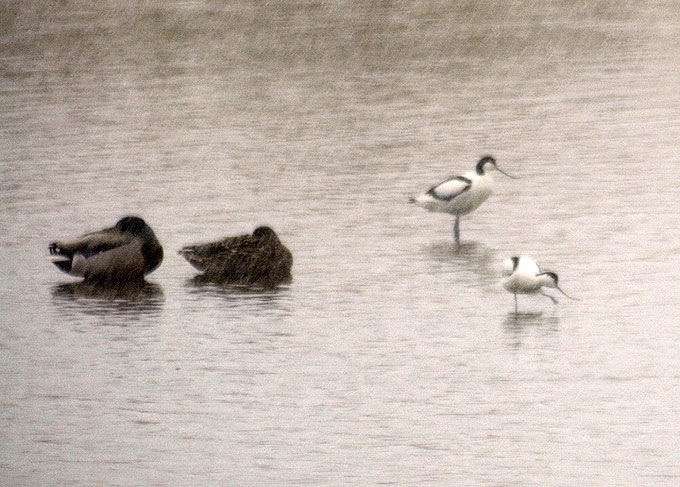
Dadepo, March 26
The usual Black Kites were clustered over the headland today, with a pair performing mid-air clashes, which drew the attention of a curious Peregrine.

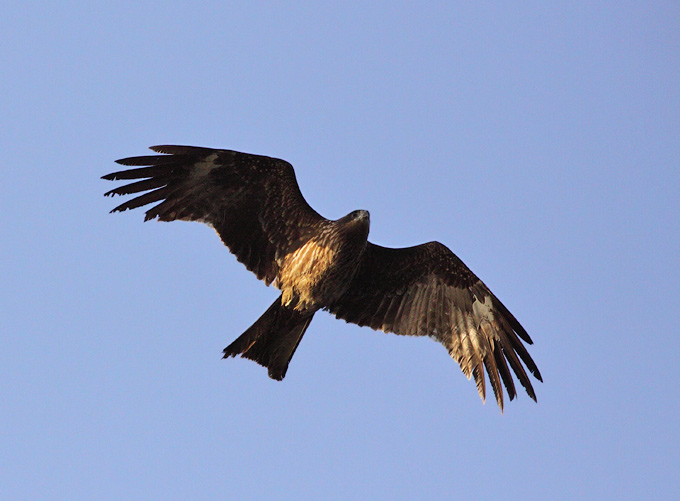
Mokpo Namhang Urban Wetland, March 26
A short stop at the natural tidal flat in the late morning showed high tide with Eurasian Wigeon and Black-headed Gull trying to use a small sandy bank along the street, but were constantly flushed away by passing pedestrians and cyclists. Three Far Eastern Oystercatcher making loudly several rounds over the place caught the attention as well as an exhausted looking Red-throated Loon which desperately tried to clean off a patch of oil from the breast.




Jeju, March 25
With thanks to Matt's guiding skills I was able to twitch the White-bellied Green Pigeon, a lonely, lost female hiding out in a grove of select trees. Superbly camouflaged, very quiet and approachable, she occasionally descended to nibble at the array of green berries. This may be the same returning individual seen regularly on the island in recent years.
Also nearby, several Pale Thrush, Japanese White-eye, singing Japanese Bush Warblers, 2 presumed Northern Goshawk glimpsed, Hawfinches, Ring-necked Pheasant, an Eastern Buzzard and 1 White's Thrush. There are small flocks of Barn Swallow on the island, matt tells me the first of them arrived in late February.
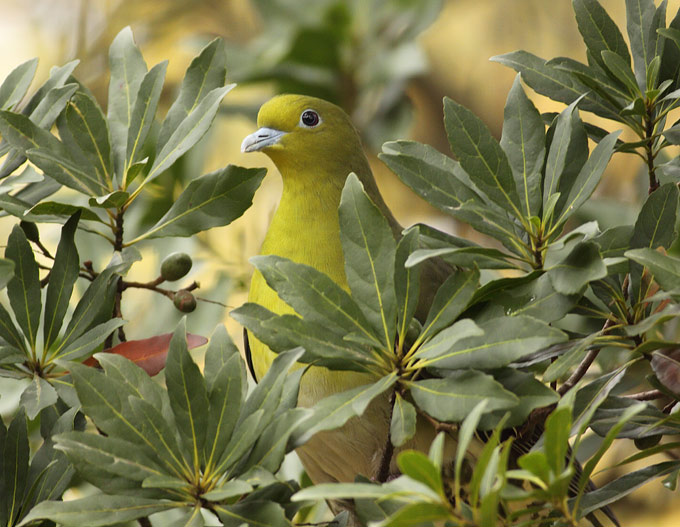



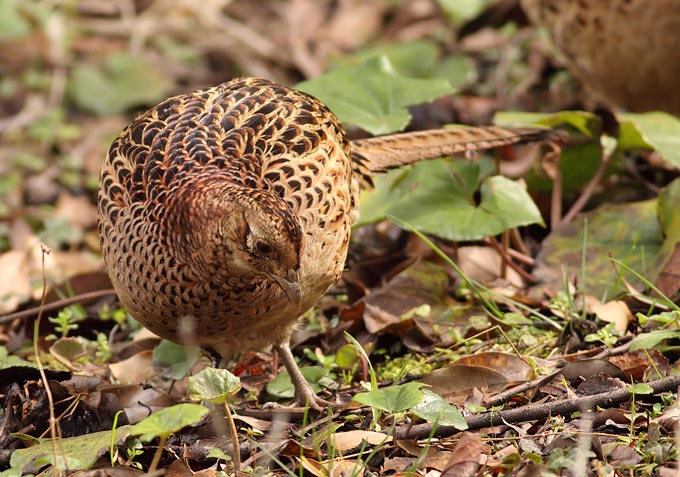
Ganseong Wetlands, March 25
I surveyed the birds along Nam Cheon and Buk Cheon, south and north of Ganseong on Sunday 21 March. There were lower numbers of ducks along Nam Cheon than during winter and fewer birds along the coast going to Buk Cheon. In the lower reaches of Buk Cheong there were a lot of ducks, including Mallards, Pintails, Common Teal, Baikal Teal and Spot-billed Ducks. There were some Great Cormorants and a couple of White-fronted Geese as well. They were being harrassed by 3 White-tailed Sea Eagles.
I checked the breeding site of Grey Herons upstream from the coast and was fortunate enough to get photos of a Yellow-throated Bunting. There were over 100 Grey Herons along the river not so far away. As I was going upstream I saw a flock of corvids with about 600 Rooks and 120 Daurian Crows flying over. They went down onto some rice fields so I went closer to take some photos.Along the section of Buk Cheon west of the main road I found more ducks including 13 species. Total count of Mallards for the day was over 1000. Additional species included Pochard, Gadwall, Mandarin Duck, Wigeon, Falcated Teal, Tufted Duck, Smew and Common Merganser. Another flock of corvids flew over making over 1000 Rooks and over 300 Daurian Crows for the day.


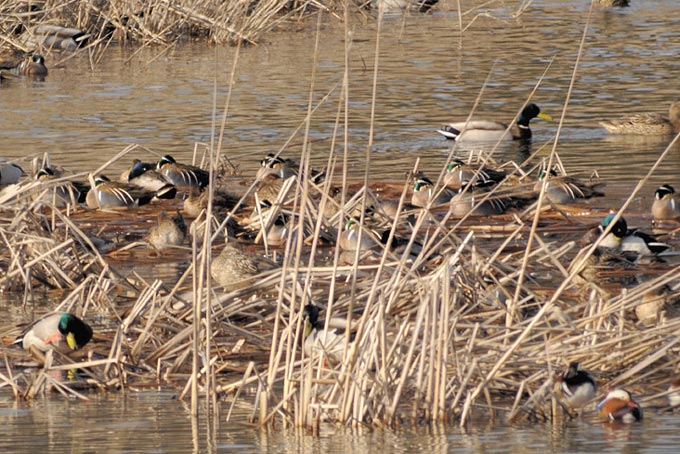
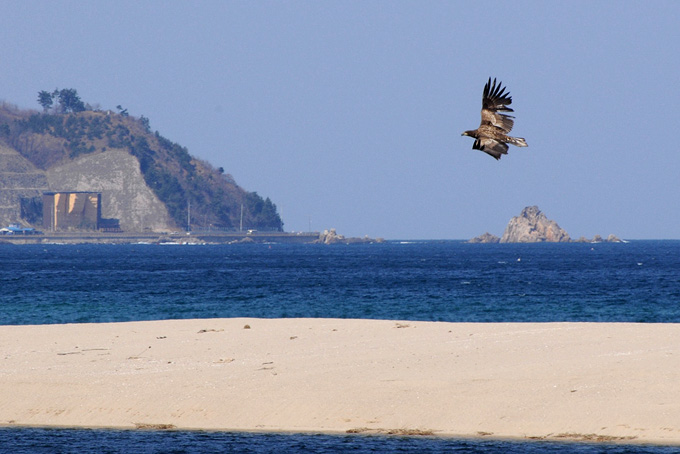


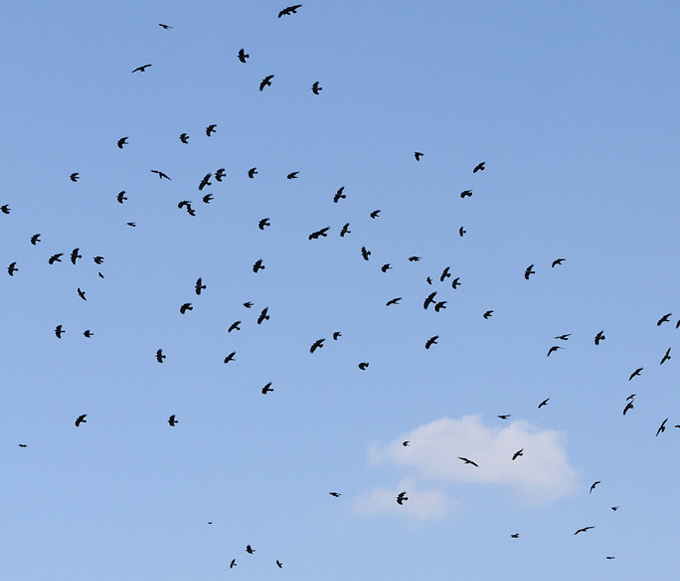
Namhansan, Cheorwon & Songdo, March 21
Within ten minutes of arriving at Namhansan we were treated to close views of a pair of Hazel Grouse.
At Cheorwon we enjoyed very good birding, of which the main highlight was good numbers of White-naped Crane and 2 Red-crowned Crane.
A quick stop at Songdo yielded little of interest except for the many small groups of Eastern Oystercatcher.
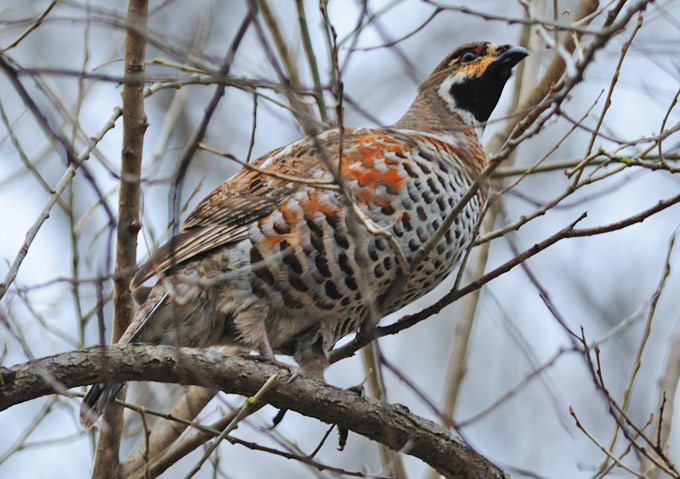
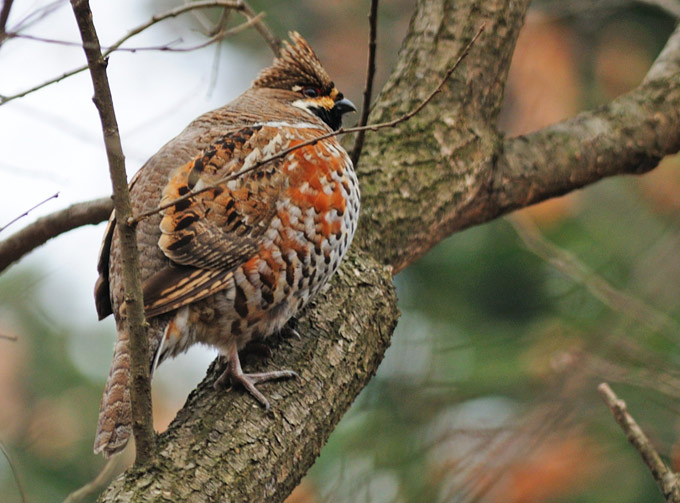



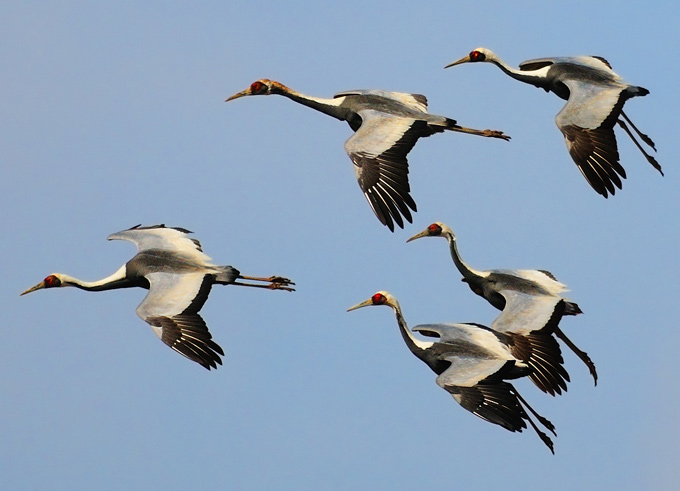

Jeju island, March 20
A trip to a park near Jeju City was extremely rewarding. A striking female White-bellied Green Pigeon perched in a tree, feeding on green berries. It was quite approachable, and apparently this same bird stayed in the park last spring, favoring one kind of tree. It was hard to spot, as it matched the color of the foliage perfectly, and was quiet and relatively immobile.

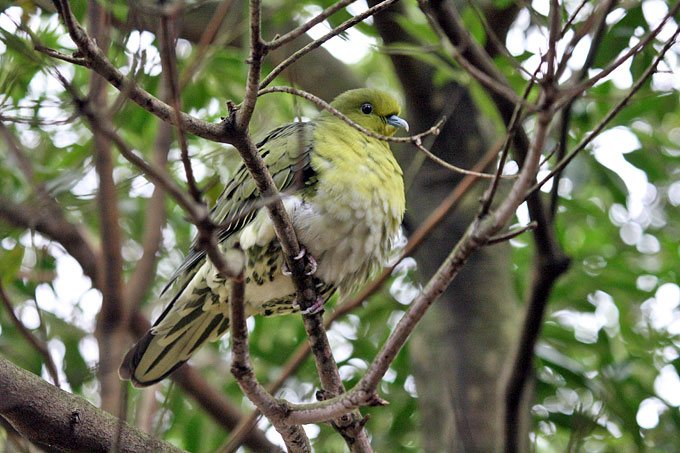
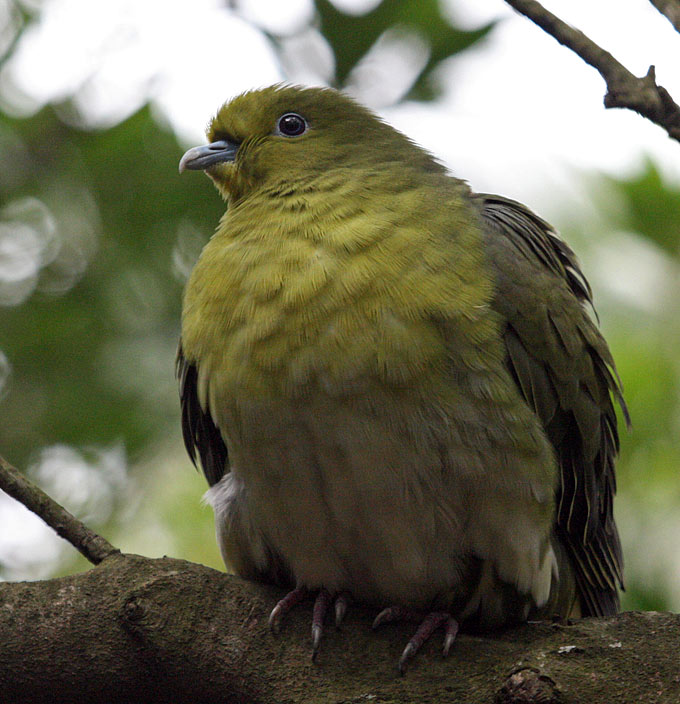
Gyeongpo lagoon and surrounds, March 20
The weather forecast was for light rain around Sokcho, so I went to Gangneung where the report was for cloudy but fine. The weather was quite mild when I arrive there in the morning but by the middle of the day the temperature drop and a cold northerly wind was blew across the lagoon. Then some light rain fell in the early afternoon.
Never the less, it was a worth while trip with 41 species of birds seen around the lagoon. Most abundant were Mallards with about 1500 on the lagoon or nearby. There were lots of Common Teals, Pintails, Greater Scaups, Pochards, Spot-billed Ducks, Black-tailed Gulls and Grey Herons. A single Eastern Curlew flew over heading north and another wader was seen flying around, but I couldn't identify it. There were smaller numbers of Coots, Gadwalls, Great Cormorants, Great Crested Grebes, Little Grebes, Mandarin Ducks, Northern Shovelers, Tufted Ducks, Wigeons, Common Goldeneyes and Smew. To the west of the lagoon in a shallow pond I found 6 Tundra Swans, 4 adults and 2 juveniles. I was able to get quite close to them and take photos with my scope without causing them too much disturbance. They were preening and bathing most of the time.
I had a quick look at the rocks off Gyeongpo Beach and saw about 50 Sanderlings, 2 Great Cormorants, 2 Glaucous Gulls and some Black-tailed Gulls. On the way through Yangyang on the bus in the morning, I saw about 60 Rooks on the north side of Namdae Cheon.







Northeast Gangwon Province, March 13 & 14
I made a trip to Namdae Cheon in Yangyang County on March 13. The fine sunny weather brought out the recreational fishermen and initially there were few birds to be seen in the lower reaches of the river. More careful observation found some interesting birds, including 11 Eastern Curlews, a Black-headed Gull in breeding plumage, Mallards, Spot-billed Ducks, Pochards, Common Mergansers, Common Goldeneyes, Great Crested Grebes and a small number of other gulls downstream from Naksandae Bridge. There were a few Great Egrets, a Pacific Loon and a Red-throated Loon there too, the latter having oil on its under parts.
To the south of the river bank I found some Far Eastern Skylarks, Oriental Turtle Doves, Grey-capped Greenfinches, Bramblings and Rustic Buntings in the trees and feeding on the ground. A mixed flock of corvids that flew over included Rooks and Daurian Crows.
Just upstream from the bridge there were more Great Egrets, Coots, and other ducks including a pair of Baikal Teal, a pair of Garganey, Wigeons and Falcated Teal. There was another Red-throoated Loon as well. On the cultivated river flat I found 4 Northern Lapwings down from the 20 I saw the week before.

Walking back towards Yangyang I saw several flocks of Far Eastern Larks flying northwards, about 230. I found 4 White-cheeked Starlings by the road in a tree and on a pole. Near the sculpture park and recently expanded soccer fields there were Dusky Thrushes and a Chinese Grey Shrike. The number of Pallas's Reed Bunting at the western end of the carparking area was less than the previous week when I was there in the rain.
In the small ponds closer to Yangyang there were many more ducks, including Mallards, Spot-billed Ducks and Common Teal. There were Grey Herons around the ponds and a Northern Goshawk in a tree nearby. I counted 76 Grey Herons in breeding colours on the gravel beds near the main river channel after they flew away from the ponds.
Other birds that I saw on March 7 that were absent included a Peregrine Falcon and a young White-tailed Sea Eagle.
At Cheongcho Lagoon in the afternoon there were lots of ducks, gulls and a few other birds. Common species included Mallards, Pochards, Greater Scaups, Great Crested Grebes, Great Cormorants, Grey Herons, Black-tailed Gulls, Herring Gulls, Slaty-backed Gulls, Black-headed Gulls, Common Gulls and Spot-billed Ducks. There were 14 Eastern Curlews, 8 Northern Lapwings, 3 Mandarin Ducks, Gadwalls, Pintails, Common Teal, Coots and a Tufted Duck. A lone Barn Swallow flying around was a surprise and there was 1 Common Redshank foraging on the mud. A Glaucous Gull landed amongst the other gulls as I was leaving the lagoon. I was trying to photogrph the Redshank when a Black-headed Gull decided to land in front of it.
Driving through the back roads of Goseong County with a friend on the way back to Ganseong we saw a Cinereous Vulture flying over the forested hills in Dowon-ri. Not far from Oho-ri there were about 1500 White-fronted Geese on the rice fields. They took flight when a helicopter flew overhead. On a small hill southwest of Songji Lagoon there were around 800 to 100 corvids settling down to roost on some electricity lines and trees on a small hill.
Driving around Goseong County back roads again on Sunday March 14 we found a large flock of corvids foraging near a road. They were mostly Rooks but there were a few Daurian Crows with them.



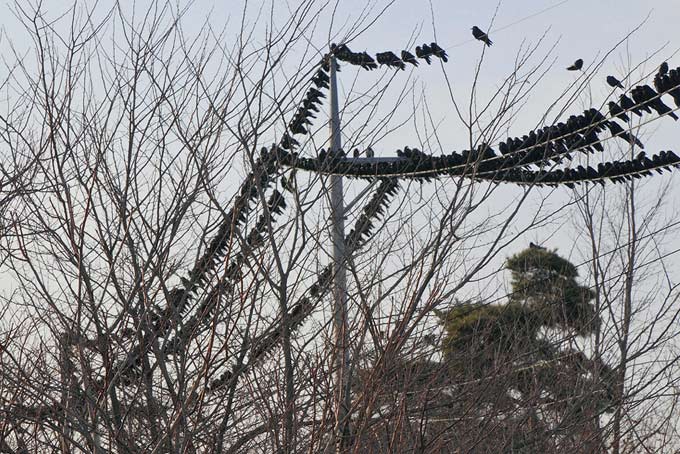
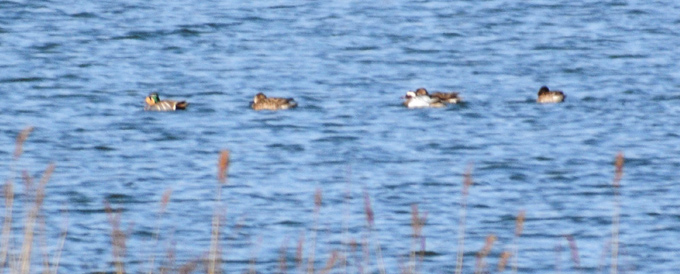
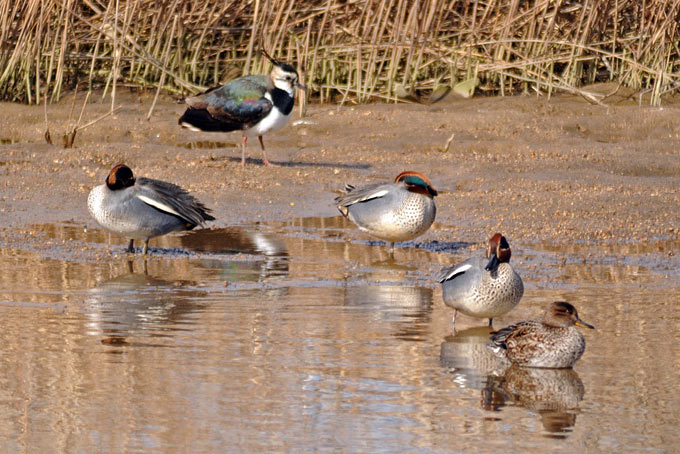


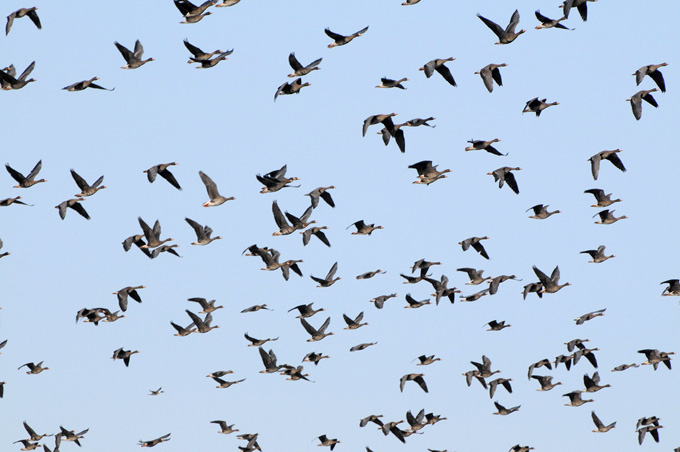

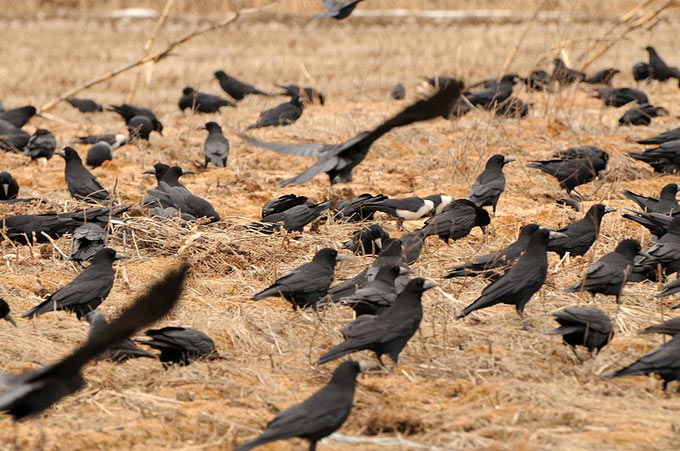

Junam/Dongpan, March 14
Notable today were 8 Pacific Swift, 2 Siberian Accentor, 1 Brambling, 1 Baikal Teal and 1 Smew, with plenty of Dusky and Naumanns Thrushes still in the area.
Uiwang, February 14
Weather wise, I expected the day to turn out as it did. What I didn't anticipate was the modified landscape around the circumference of the lake. For whatever reason (s), it has flooded most adjacent ricefields. Nonetheless, birding turned out to be quite active due to the plentiful "rice" marshes. Major & minor highlights are as follows: 1 Black Headed Gull, 6 Grey Cheeked Starlings, 4 Mandarin Duck, 2 confiding Marsh tit, 6 Great Creasted Grebe, 1 Bullheaded Shrike, 150 Bean Goose, 30 White Wagtail, 10 Tufted Duck, 24 Northern Shoveler, 20 Common Pochard, 8 Naumann's Thrush, 2 Dusky Thrush, 30 Eurasian Skylark, 1 Northern Goshawk, 1 Eastern Buzzard, 2 Eurasian Kestrel, mixed flocks of Yellow-throated, Rustic, & Meadow Bunting and very strong numbers of Eurasian Teal, Mallard, and Eastern Spot-Billed Duck.

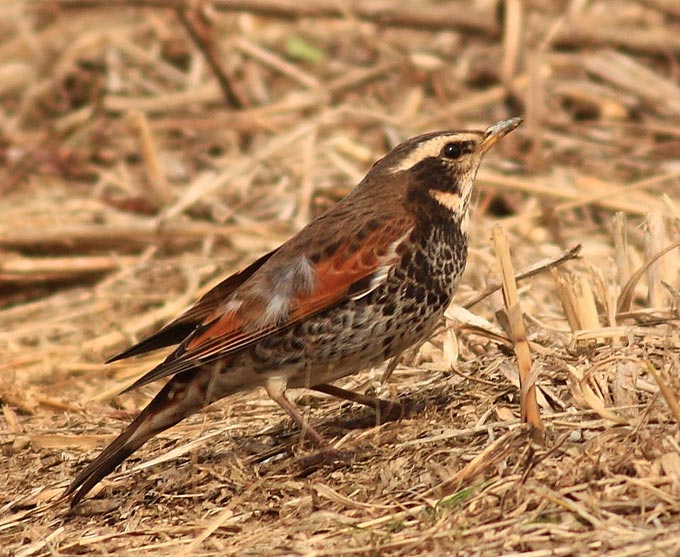

Northeast coast, Jeju island, March 13
A fairly quiet day on Jeju, with a lot of winter birds gone, and the spring migration season a few weeks off. At Hado, about a dozen Black-faced Spoonbill and 2 Eurasian were seen. Duck numbers have dropped off significantly. Several dozen Common Shelduck, a similar number of Spot-billed Duck and Gadwall, a handful of Northern Shoveler, 200 Eurasian Wigeon, about 50 each of Pochard and Tufted Duck, and a single Pintail were left. About 30 Coot were also seen. A small but unidentified owl, possible a Tawny Owl, flashed by. At Seongsan, a female Harlequin Duck gave distant scope views, in the company of several Black-necked Grebe. Nearby, a single Black-headed Gull mingled with Black-tailed Gulls, while a dozen Dunlin huddled near a handful of scuttling Kentish Plover. At the Halla Arboretum in Jeju-si, a female Hawfinch gave great close views. Several Pale Thrush thrashed through leaf litter, close to a walking trail. Back in Seogwipo, Barn Swallows are back in force, with dozens seen swooping low at all waterfront locations.


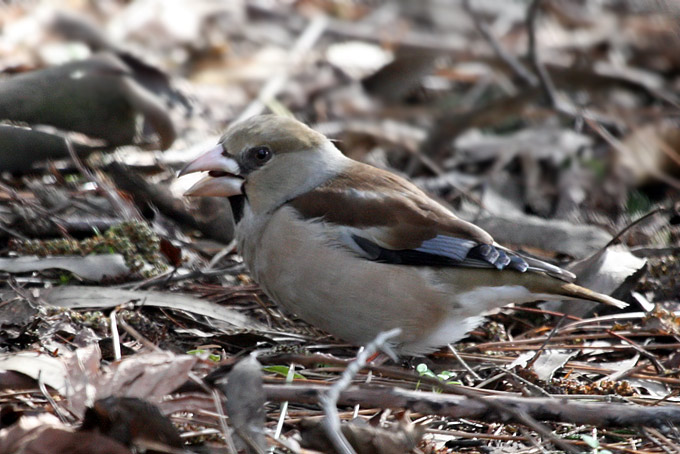
Hadong, March 13
Taking advantage of the sunny weather, I went out to enjoy the antics of some Black-headed Gulls. While watching them, I noted a few other common species, of which the Brown-eared Bulbuls and Great Tits were the most vocal. A flock of at least 40 Northern Lapwing was the least expected of the days birding, and a welcome surprise, while a lone Moorhen remained hidden in the reeds.
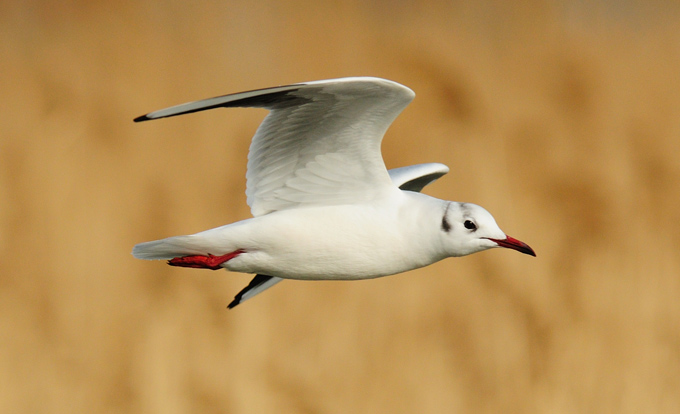







Paldang and Gwangneung, March 11
The Seoul area had a few inches of snow on the 10th; the 11th showed a mix of clouds and sun and warmer temperatures. On the Han River near Paldang in the morning, a scattering of Whooper Swans, Common Pochards, Tufted Ducks, Goldenyes, a White-tailed Sea Eagle and (heard only) Far-Eastern Lark and Siberian Accentor. At the National Arboretum, Claus started things off very well, finding a Solitary Snipe sun-bathing beside the stream; however, and perhaps because of the snow cover and much chain-sawing of snow-damaged tree limbs, the rest of the morning yielded relatively few birds; a Greater Spotted Woodpecker, Marsh, Long-tailed, Varied and Great Tits were the highlights along with a few Cinereous Vultures, a Hawfinch, a Bull-headed Shrike and some (heard only) Bullfinches and Yellow-throated Buntings.
The afternoon (R.N. only) added some close looks at about 5 Bullfinches (some of them marvelously rotund) and a brief look at a vocal Grey-capped Woodpecker.


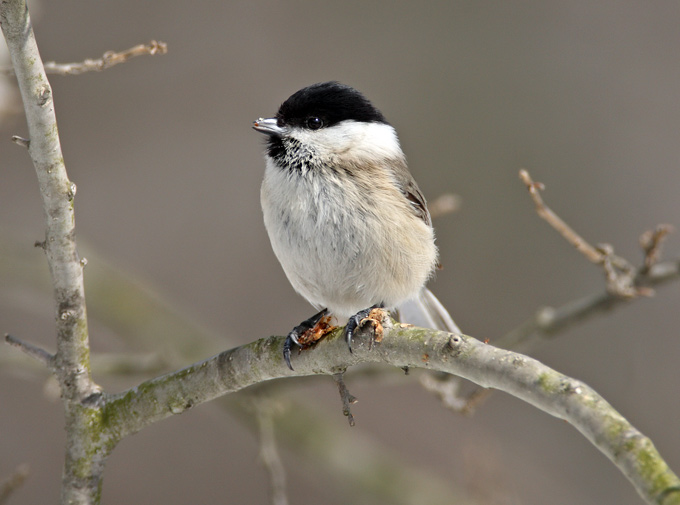




Junam and Dongpan Reservoirs, March 11
A fine and crisp morning, and a mass arrival of Pacific Swifts in the area since my last visit. There were at least 30 birds hawking insects over Dongpan and the southern end of Junam, with the snow-covered hills providing a most un-springlike backdrop. Other summer migrants seen today were 3 Barn Swallows - also at the southern end of Junam - and one Hoopoe. The twin evils of a high water level and plenty of disturbance from fishing boats meant that Junam Reservoir was once again rather devoid of birds, nonetheless there were still 3 Smew present (the merest remnants from the several hundred birds that were present in mid winter). A Common Snipe was seen, and 27 Northern Lapwing passed overhead.
A walk along the eastern flank of Dongpan Reservoir revealed good numbers of the expected wildfowl species, including Falcated Duck, Wigeon and Gadwall. c. 250 Whooper Swans passed overhead, having presumably been flushed from Junam by the fishing boats. Also along the edge of Dongpan, a huge Northern Goshawk gave rare perched views - it showed so well, in fact, that I was able to get a few record shots using my point and shoot camera through my telescope. A drumming male Great Spotted Woodpecker on a dead tree was a personal first for the area.
Other notable birds seen during my 3 hour visit: single Little and Great Crested Grebes (these species were largely absent all winter), a mixed flock of at least 200 Dusky and Naumanns Thrushes, 3 Olive-backed Pipits and 4 Eurasian Spoonbills.

Seogwipo, Jeju island, March 9
'Small birds' ruled in the park today, on a decidedly crisp spring day. Budding trees were buzzing with a large mixed flock of Great Tits, singing Japanese Bush Warblers, Yellow-throated Buntings, and Japanese White-eyes. A pair of Daurian Redstarts pursued each other while making their distinctive 'rusty hinge' squeak. A female Red-flanked Bluetail flitted through riverside brush. About 6 Olive-backed Pipits perched in a nearby tree when flushed, above a stream that held an adult male leucopsis White Wagtail in summer plumage. This is notable because I usually see lugens White Wagtails on this stream. A male Pale Thrush foraged by the water's edge, and at least 9 Dusky Thrush perched in a flowering tree. No evidence of the several dozen Mandarin Ducks that were seen in the park a couple of months ago, and similar Spot-billed Duck numbers have dwindled back to a regular half-dozen. Two skiddish Little Grebes were also seen.
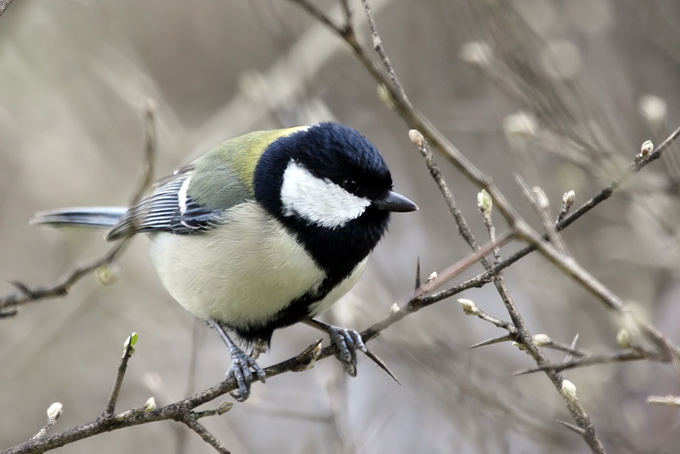

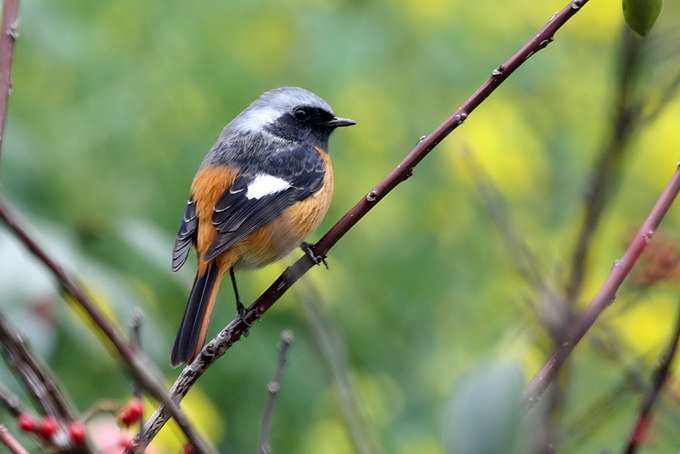


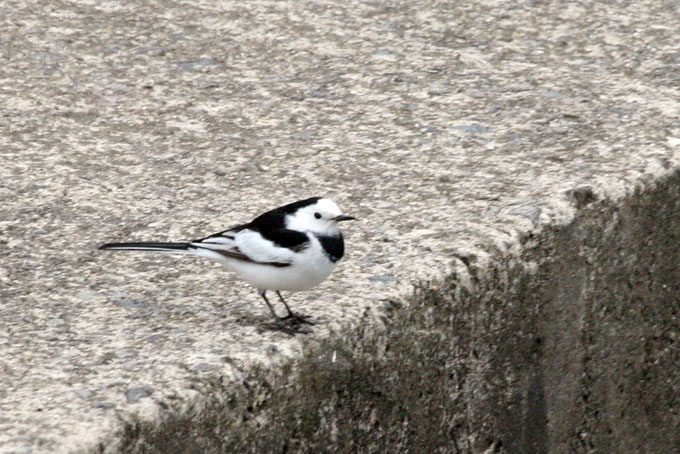

Junam Reservoir, March 7
In cold and windy conditions, not many birds were seen. A single Tundra Swan was again present, and the wintering Long-tailed Shrike showed in the reedbed just past the second observation tower.
Daejon area, March 6
We drove down to Daejon in drizzling rain to visit a known site for Plumbeous Water Redstart: there we found two males, quite confiding when they weren’t chasing each other, flies, or a lone White Wagtail. The two males were quite vocal and showy, but no female has – as yet – appeared.



Junam Reservoir, March 3
Heavy disturbance from at least 5 boats, and a much increased water level which has completely covered the mud spit, meant that there were very few birds on the main reservoir this morning. However a welcome omen of spring was provided by the first Pacific Swift of the year, hawking insects high above the entrance road. Additionally, a 2nd winter Black-tailed Gull in the first bay was a most unexpected inland sight. Elsewhere, a single Tundra Bean Goose associated with a flock of about 1200 Greater White-fronted Geese on rice stubble near the Junam 3rd Pumping Station, a Northern Goshawk showed well as it soared overhead near the visitor centre, and there was a nice mixed flock of 100+ Dusky and Naumanns Thrushes in the row of trees along the southern edge of the reservoir.





